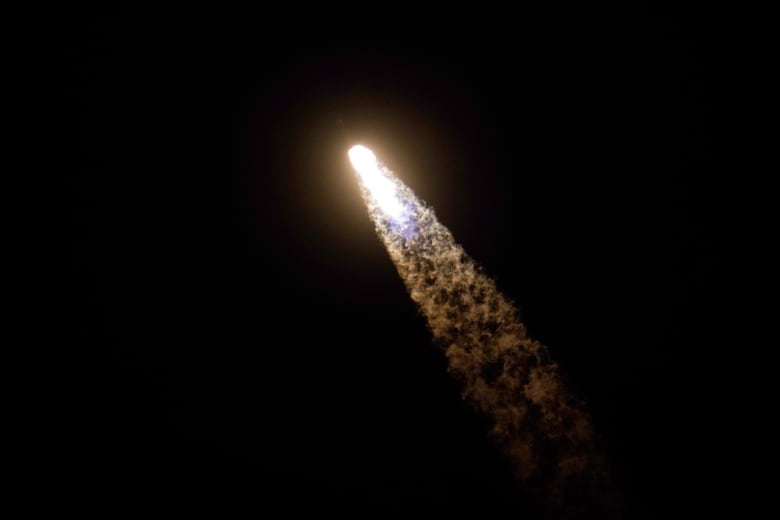SpaceX launches crew with recycled rocket and capsule
SpaceX launched four astronauts into orbit Friday using a recycled rocket and capsule, the third crew flight in less than a year for Elon Musk’s rapidly expanding company.
The astronauts from the U.S., Japan and France should reach the International Space Station early Saturday morning, following a 23-hour ride in the same Dragon capsule used by SpaceX’s debut crew last May. They’ll spend six months at the orbiting lab.
It was the first time SpaceX reused a capsule and rocket to launch astronauts for NASA, after years of proving the capability on station supply runs. The rocket was used last November on the company’s second astronaut flight.
Embracing the trend, spacecraft commander Shane Kimbrough and his crew weeks ago wrote their initials in the rocket’s soot, hoping to start a tradition.
“Glad to be back in space,” Kimbrough radioed once the capsule was safely in orbit.
Crew-2 astronauts aboard Dragon check in from orbit. Watch live → https://t.co/bJFjLCzWdK pic.twitter.com/BqrbPZCCw5
For NASA astronaut Megan McArthur, it was a bit of deja vu. She launched in the same seat in the same capsule as her husband, Bob Behnken, did during SpaceX’s first crew flight. This time, it was Behnken and their seven-year-old son waving goodbye. McArthur blew kisses and offered virtual hugs.
Also flying SpaceX on Friday were Japan’s Akihiko Hoshide and France’s Thomas Pesquet, the first European to launch in a commercial crew capsule.

It was a stunning scene: The launch plume glowed against the dark sky, reflecting the sunlight at high altitude.
“Just spectacular,” said NASA’s acting administrator Steve Jurczyk.
For Friday’s automated flight, SpaceX replaced some valves and thermal shielding, and installed new parachutes on the capsule, named Endeavour after NASA’s retired space shuttle. Otherwise, the spacecraft is the same vehicle that flew before.
“We’re thrilled to have a crew on board Endeavour once again,” SpaceX Launch Control radioed just before liftoff.

All four astronauts clasped hands as Kimbrough noted it was the first time in more than 20 years that U.S., European and Japanese astronauts had launched together.
The first-stage booster touched down on an ocean platform nine minutes after liftoff.
What’s next for private space companies
Rapid reusability is critical to Musk’s effort to open space to everyone, land NASA’s next moonwalkers and, his loftiest goal by far, build a city on Mars.

Musk will go a long way toward achieving that first objective with a private flight in September. It will be followed in October by SpaceX’s fourth crew launch for NASA.
SpaceX picked up the station slack for NASA after the space agency’s shuttles retired in 2011, starting with supply runs the following year. The big draw was last year’s return of astronaut launches to Florida, after years of relying on Russia for rides.
“It’s awesome to have this regular cadence again,” said Kennedy’s director Robert Cabana, a former shuttle commander.

Boeing, NASA’s other contracted crew transporter, isn’t expected to start launching NASA astronauts until early next year. First, it needs to repeat a test flight of an empty Starliner capsule, possibly in late summer, to make up for its software-plagued debut in December 2019.
Last week, SpaceX beat out two other companies, including Jeff Bezos’s Blue Origin, to land astronauts on the moon for NASA in three or more years. They’ll descend to the lunar surface in Starship, the shiny, bullet-shaped rocket ship that Musk is testing in the skies over Texas, with fiery, explosive results.
www.cbc.ca 2021-04-23 12:35:05


